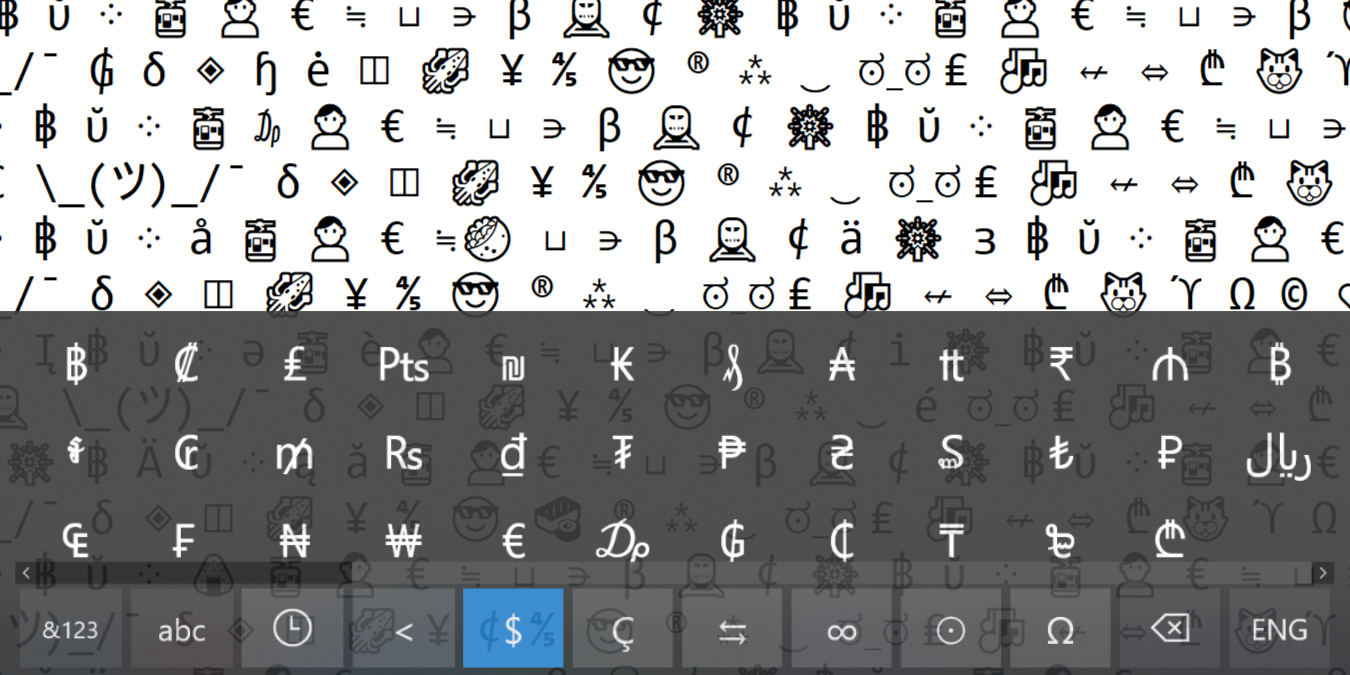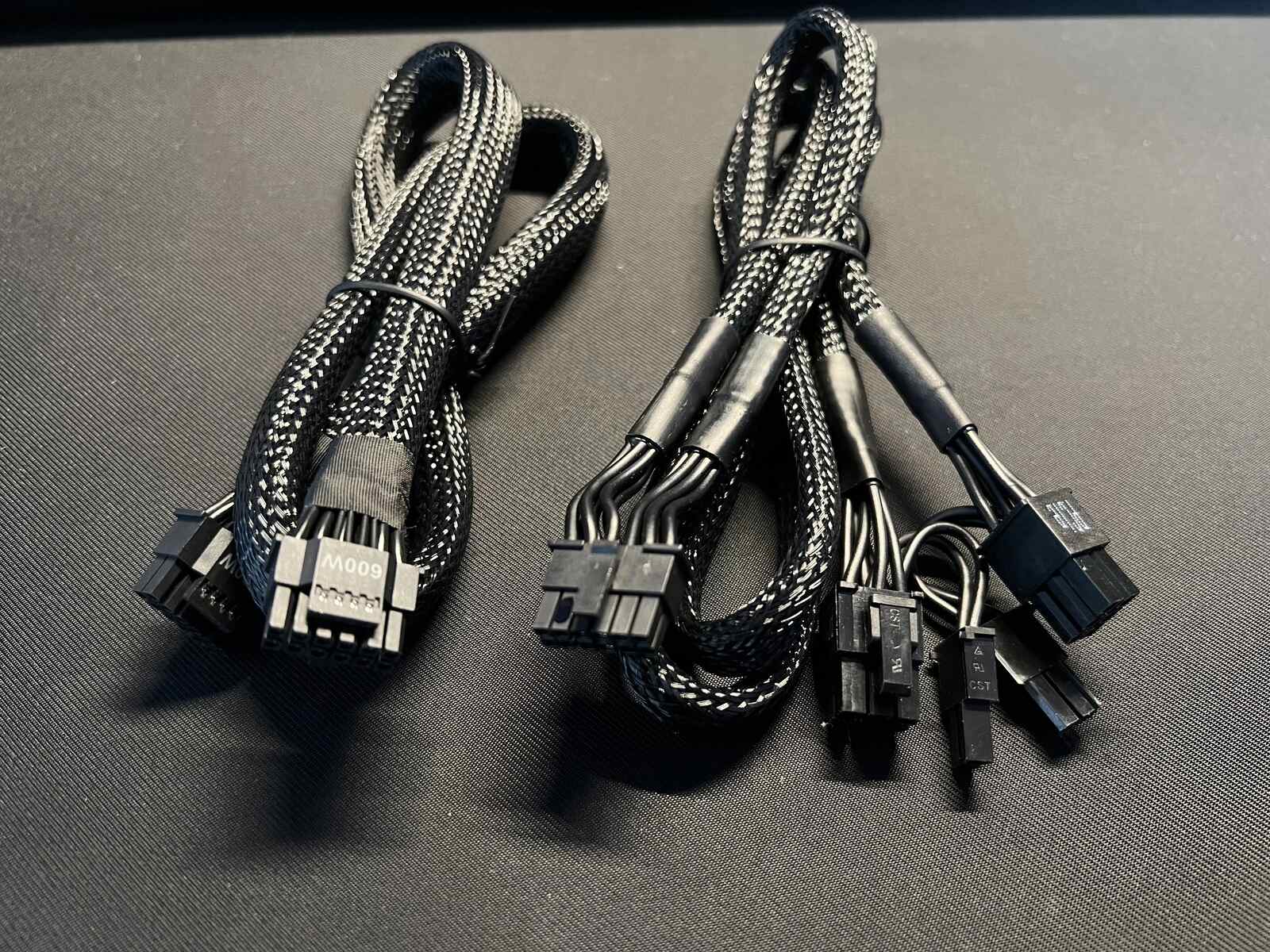Introduction
Welcome to this guide on how to make a Euro sign on the keyboard. The Euro (€) symbol is widely used in Europe and is an important currency symbol. However, not all keyboards have a dedicated key for the Euro sign, which can make typing it a bit challenging for some users.
In this article, we will explore various methods that can help you easily make the Euro sign on your keyboard, regardless of whether you are using a Windows computer, Mac, or even if you need to add it to an HTML document. Each method has its own advantages and may be more suitable depending on your specific requirements and the programs you are using.
We’ll begin by looking at the most common methods, which involve using key combinations and character mapping. These methods are generally compatible with most keyboards and operating systems. Additionally, we will explore advanced methods like using Alt codes, AutoCorrect, and Text Replacements, which are especially useful if you frequently need to type the Euro sign in specific programs like Microsoft Word or on a macOS system.
Furthermore, if you are a web developer or need to add the Euro sign to an HTML document, we will cover the method of using special characters in HTML encoding. This will allow you to display the Euro sign correctly on websites and web-based applications.
So, whether you need to type the Euro sign for financial or computing purposes, or if you just want to enhance your keyboard skills, this guide has got you covered. Let’s dive into the various methods and see which one suits you best.
Method 1: Using Key Combinations
One of the simplest ways to type the Euro sign on your keyboard is by using key combinations. This method is usually compatible with most keyboards and operating systems, including Windows and Mac.
To make the Euro sign using key combinations, follow these steps:
- Make sure the Num Lock on your keyboard is enabled.
- Hold down the Alt key on your keyboard.
- While holding down the Alt key, enter the numeric code 0128 using the numeric keypad (not the number keys at the top of the keyboard).
- Release the Alt key, and the Euro sign (€) should appear.
If your keyboard doesn’t have a numeric keypad, you can try using the Fn (function) key along with the Alt key and enter the numeric code using the number keys at the top of the keyboard. However, this method can vary depending on your specific keyboard model and manufacturer.
Key combinations are handy as you don’t need to install any additional software or make changes to your operating system settings. However, it’s important to note that this method may not work in all applications or programs, especially those that don’t support Unicode characters.
So, whether you need to type the Euro sign in a document, spreadsheet, or any other program, this key combination method provides a quick and easy solution. Give it a try and see if it works for you.
Method 2: Using Character Map
If the key combination method doesn’t work for you or if you prefer a graphical user interface approach, you can use the Character Map utility to insert the Euro sign. Character Map is a built-in tool in Windows that allows you to browse and insert special characters into your documents.
Here’s how you can use the Character Map to insert the Euro sign:
- Open the Start menu and search for “Character Map.”
- Click on the Character Map application to open it.
- In the Character Map window, select the font that supports the Euro sign, such as Arial, Calibri, or Times New Roman.
- Scroll through the character grid or use the search bar to locate the Euro sign (€).
- Click on the Euro sign to select it, and then click the “Copy” button.
- Switch to the application or document where you want to insert the Euro sign.
- Place your cursor at the desired location, and then press Ctrl + V to paste the Euro sign.
The Character Map method is useful if you prefer a visual representation of the available characters and if you need to insert the Euro sign in various programs or documents. However, keep in mind that this method may not be as quick as using key combinations, especially if you need to repeatedly insert the Euro sign.
It’s worth mentioning that macOS also has a similar tool called the Character Viewer, which you can access by clicking on the “Edit” menu in most applications and selecting “Emoji & Symbols.” From there, you can search for the Euro sign and insert it into your document.
Whether you’re working on a Windows or Mac system, the Character Map (or Character Viewer) provides a convenient way to insert the Euro sign without the need for memorizing key codes or installing additional software.
Method 3: Using Alt Codes
If you frequently need to type the Euro sign and other special characters, using Alt codes can be a time-saving solution. Alt codes are a combination of numbers that you can enter using the numeric keypad to insert specific characters into your documents or text fields.
Here’s how you can use Alt codes to type the Euro sign:
- Make sure the Num Lock is enabled on your keyboard.
- Press and hold the Alt key.
- On the numeric keypad, enter the Alt code for the Euro sign, which is 0128.
- Release the Alt key, and the Euro sign (€) will appear.
Alt codes are highly versatile and can be used in various applications, including word processors, email clients, web browsers, and more. However, it’s important to note that Alt codes only work on keyboards with a numeric keypad. If your keyboard doesn’t have a dedicated numeric keypad, you can try using alternative methods like the Character Map or key combinations.
Additionally, it’s worth mentioning that Alt codes can be used to insert other special characters and symbols as well. By memorizing a few Alt codes or keeping a cheat sheet handy, you can easily access a wide range of characters beyond just the Euro sign.
Overall, if you often deal with special characters and want a quick and efficient way to type the Euro sign, Alt codes are a great option. Give them a try and see how they can streamline your typing process.
Method 4: Using AutoCorrect (for MS Word)
If you frequently use Microsoft Word, you can take advantage of the built-in AutoCorrect feature to automatically replace a specific text string with the Euro sign. This method can save you time and effort by allowing you to type a short code or word instead of the actual Euro sign.
Here’s how you can set up AutoCorrect to insert the Euro sign in MS Word:
- Open Microsoft Word on your computer.
- Click on the “File” tab and select “Options” from the dropdown menu.
- In the Word Options window, select “Proofing” from the sidebar.
- Click on the “AutoCorrect Options” button.
- In the AutoCorrect dialog box that appears, enter a unique text string or code that you’d like to use as a shortcut for the Euro sign (e.g., “EUR”).
- In the “Replace” field, type the Euro sign (€) or copy and paste it from another source.
- Click the “Add” button and then “OK” to save the AutoCorrect entry.
From now on, whenever you type the text string or code that you assigned in the AutoCorrect settings (e.g., “EUR”), MS Word will automatically replace it with the Euro sign.
The beauty of using AutoCorrect in MS Word is that it works in real-time, correcting your text as you type. This ensures consistent and accurate insertion of the Euro sign without interrupting your workflow.
Keep in mind that this method is specific to Microsoft Word and may not work in other applications or programs. However, many text editors and word processing software offer similar auto-replacement features that you can explore.
So, if you frequently work with MS Word and want a seamless way to insert the Euro sign, setting up AutoCorrect can greatly enhance your productivity. Give it a try and see how it simplifies your typing experience.
Method 5: Using Text Replacements (for macOS)
If you’re using a macOS system, you can leverage the Text Replacements feature to quickly insert the Euro sign into your text. Text Replacements, also known as keyboard shortcuts, allow you to define custom abbreviations that will automatically expand into longer phrases or symbols, including the Euro sign (€).
To set up a Text Replacement for the Euro sign in macOS, follow these steps:
- Open the Apple menu and click on “System Preferences”.
- Choose “Keyboard”, and then click on the “Text” tab.
- Click on the “+” button at the bottom left to add a new Text Replacement.
- In the “Replace” field, enter a unique abbreviation or code that you want to associate with the Euro sign (e.g., “euro”).
- In the “With” field, paste the Euro sign character (€) or copy and paste it from another source.
- Close the System Preferences window.
Now, whenever you type the specified abbreviation (e.g., “euro”) followed by a space, macOS will automatically replace it with the Euro sign.
The Text Replacements feature is not limited to the Euro sign; you can create shortcuts for other frequently used symbols or phrases as well. This can significantly speed up your typing and save you from manually inserting special characters every time.
It’s important to note that this method is specific to macOS and may not work in other operating systems. However, other platforms and text editors may have similar autocompletion or text expansion features that you can explore.
By utilizing Text Replacements on macOS, you can effortlessly incorporate the Euro sign and other symbols into your text, enhancing your efficiency and productivity in the process. Give it a try and experience the time-saving benefits for yourself.
Method 6: Using Special Characters (for HTML)
If you’re a web developer or need to add the Euro sign to an HTML document, you can rely on special characters and HTML entities to display it correctly on websites and web-based applications. HTML provides a set of predefined entities that represent special characters, including the Euro sign (€).
To use the Euro sign in HTML, you can use either the entity name or the numeric character reference:
- For the entity name, use
€or&euro. - For the numeric character reference, use
€or€(decimal or hexadecimal code respectively).
Here’s an example of how you can include the Euro sign in your HTML code:
<p>The total cost is €150.</p>
By using these special characters or entities, the Euro sign will be rendered correctly in the browser when viewing the HTML page.
It’s worth noting that when working with databases or processing user input, it’s important to handle data securely to prevent potential security vulnerabilities, such as SQL injection or cross-site scripting (XSS). When displaying user-generated content or dynamically generated data, make sure to properly sanitize and escape the Euro sign character to prevent any issues.
Incorporating the Euro sign correctly in your HTML allows you to communicate currency values effectively on your website or web application. By using HTML standard entities or character references, you ensure consistent and accurate rendering of the Euro sign across various devices and browsers.
Conclusion
Typing the Euro sign on a keyboard may seem like a daunting task if your keyboard doesn’t have a dedicated key for it. However, with the various methods outlined in this guide, you can now easily insert the Euro sign regardless of your operating system or the programs you are using.
We explored methods such as key combinations and using the Character Map or Character Viewer, which are universally compatible with most keyboards and operating systems. These methods offer quick and straightforward ways to type the Euro sign when needed.
For those using Microsoft Word or macOS, we highlighted the use of AutoCorrect and Text Replacements, respectively. These features allow you to set up shortcuts that automatically replace your specified text strings with the Euro sign. This can significantly speed up your typing and improve productivity, particularly for repetitive tasks.
Lastly, we covered the method of using special characters and HTML entities for web developers. This ensures the proper display of the Euro sign on websites and web-based applications, providing a seamless user experience across different browsers and devices.
With these methods at your disposal, you now have the tools to effortlessly include the Euro sign in your documents, emails, website content, or any other text-based content you work with. Choose the method that best suits your needs and enjoy the convenience of typing the Euro sign on your keyboard.
Whether you’re a financial professional, a frequent traveler to Eurozone countries, or a web developer, the ability to type the Euro sign is a valuable skill. Now you can confidently and efficiently communicate currency values and enhance the visual appeal of your content with the Euro sign.

























